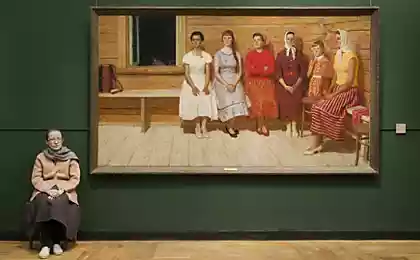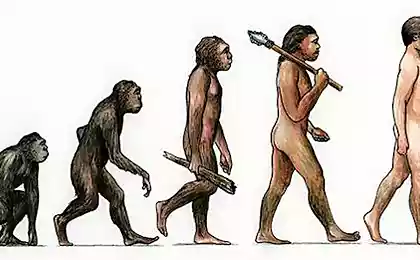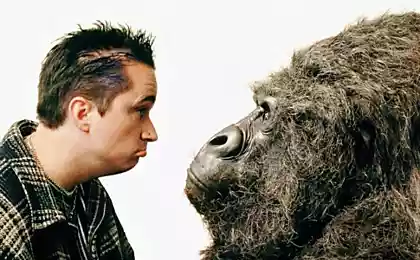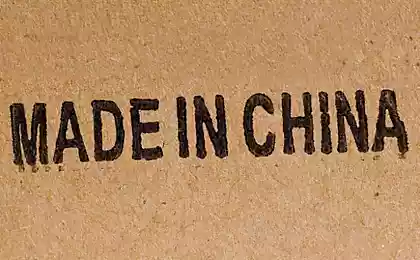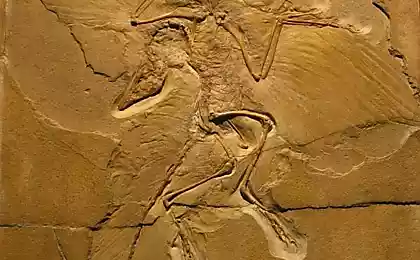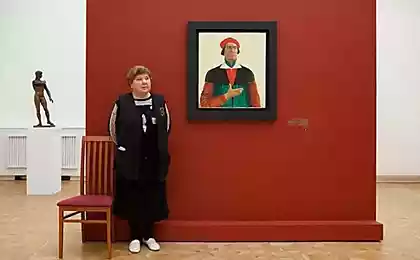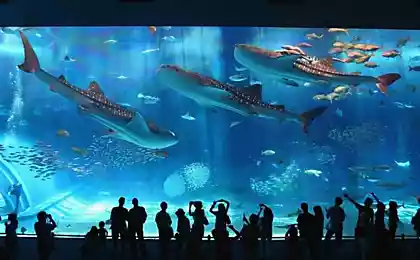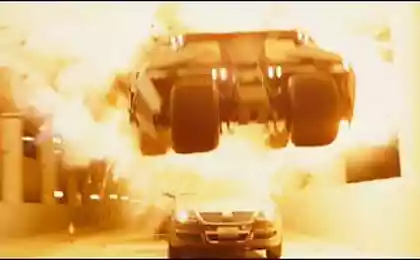1207
Gallery computer evolution
The gallery is located in a small room, where the windows of expanded computer (and not only), iron, since Soviet times to the modern gadgets and servers.
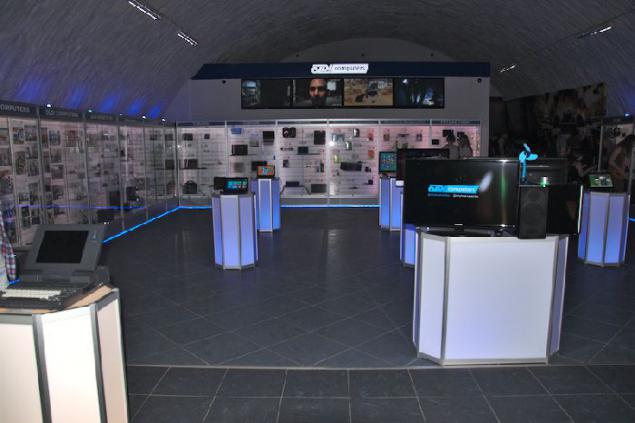
As in other museums dedicated to the development of computer technology, computer evolution in the gallery exhibition begins with counting sticks, and by adding machines. I do not think any of you have not seen counting sticks for first class and scores, so they miss the pictures. But what a museum does without mechanical adding machine "Felix»?
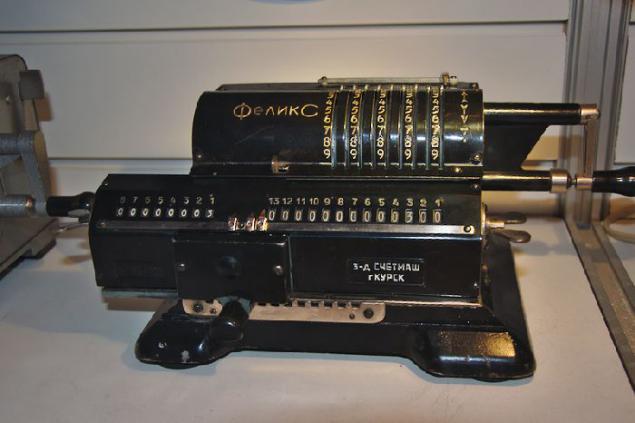
He began to be issued in 1929 and its production lasted right up to 1978. In 1958, a calculating machine cost 110 rubles.
Here you can see and later adding machine VC-1, which started mass-produced since 1951 in the Penza factory "Schetmash." On the Internet for some reason they write that the VC-1 was manufactured in 1953, but in the catalog NIISCHETMASH "Counting machines" the date of serial production is 1951. Cost of such an adding machine in the same in 1958 as much as 750 rubles.
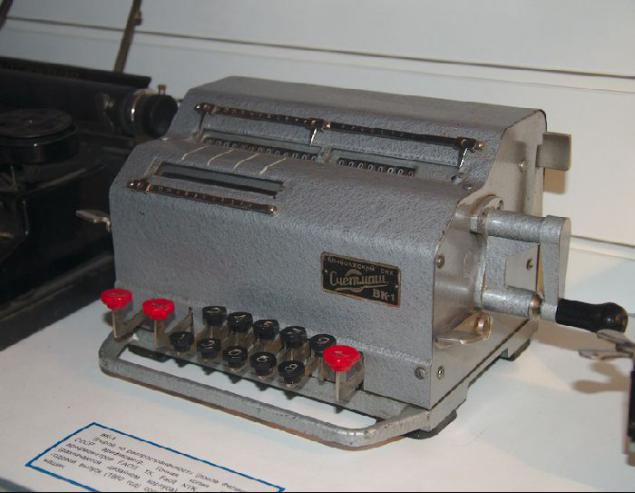
In the description of the exhibit, you can you can read, that this was a copy of an adding machine adding machines, produced by the Swedish company Facit 1939 (Facit TK).
In this museum, I saw my first computer - "Search" (the date of the end of development - 1988)
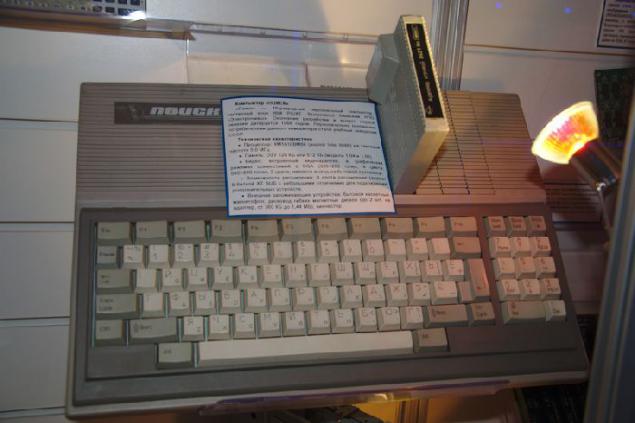
It was a Soviet computer Soviet KM1810VM88 processor, which was similar to the processor Intel 8088. He had 128 KB of RAM, but it can be increased up to 640 kB, adding an expansion card, similar to what is already inserted into the connector in the picture. The biggest problem of the computer, especially for playing games, video card has CGA, which can simultaneously display no more than four colors. While the games have begun to appear, which required a minimum of graphics EGA, which could show as many as 16 colors. But even these four colors then I could not see because we had a monitor monochrome. Sometimes a computer is connected to a color television, then you can enjoy all the beauty of the CGA-shnyh games. I especially like the graphics in the game Livingstone, do not even think that there are only 4 colors.
"Search" can work with a tape recorder or drive. We he worked with the drive, there was even a second disk drive, but he worked in a day, you can see where something was a bad contact, but where now no one will know. In general, with contacts in the computer it was a real disaster. Sometimes the computer stopped to see the first drive, offering boot from the tape. After compressions at different places of the body and connectors, after repeated reset it, most often, I started to work as if nothing had happened. But the second drive is frequently not working than working.
Housing "Search" was made of plastic creaking terribly, especially at the joints. From the same plastic have joysticks that can be connected to it. In the picture, by the way, an expansion card installed to connect these joysticks. But they are useless, too, was not enough as the games that supported them, could be counted on the fingers of one hand, and even the fingers remain. Theoretically, you could still connect to it and the mouse, but we did not have it, and it was then, and is not particularly needed.
Here in the gallery I saw and printer that we have been working with your computer - MS Electronics in 6312. On top of round boxes, resembling a jar of jam, are interchangeable heads for him.

This inkjet printer, a clone Kodak Diconix-150, although apparently they are still different. I do not know the original printer but MS 6312, as well as the second drive, often lying inoperative. So he burned the power supply, then something else. In general, the purpose of its use is rarely succeeded.
Among the exhibits of the gallery you can see the hard drives, peer "search».
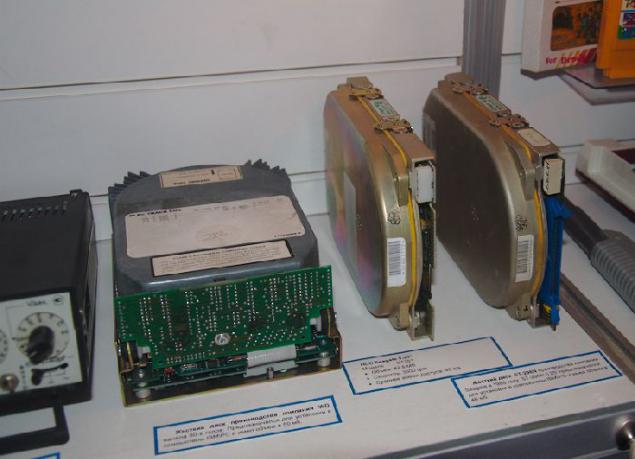
To "search", by the way, too, it was possible to connect the hard drive at the end of the life of the computer he have even appeared, but at the time I told them not particularly used, mostly, was loaded with a bootable floppy disk, and then insert the floppy disk with the desired game or program - and forward.
Floppy disks were the size of 5.27 ", such as in the following photo, which shows the license (!!!) MS-DOS. About the fact that the software is licensed, while few of us know - all the programs and games were bought at Mitino radio market. Round trip for me was an important event, before it was to read the book with a description of games (for example, "50 computer games") and to understand what kind of game I want to buy. Find the right game if not a problem - there was a huge selection.
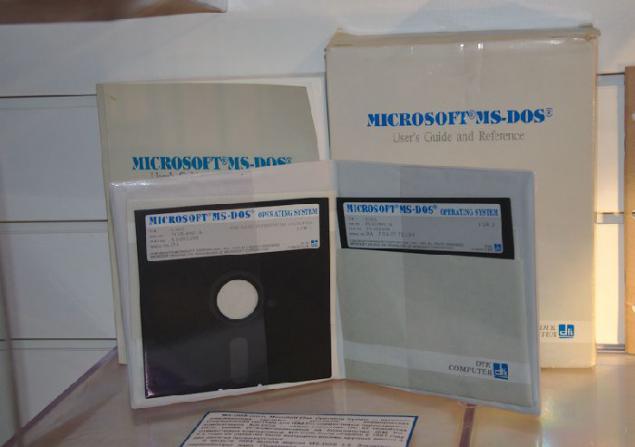
In addition to "Search" in the gallery you can see another Soviet computer - Agate, which was designed before the "Search" in 1983 at the Research Institute of computer systems (NIIVK).
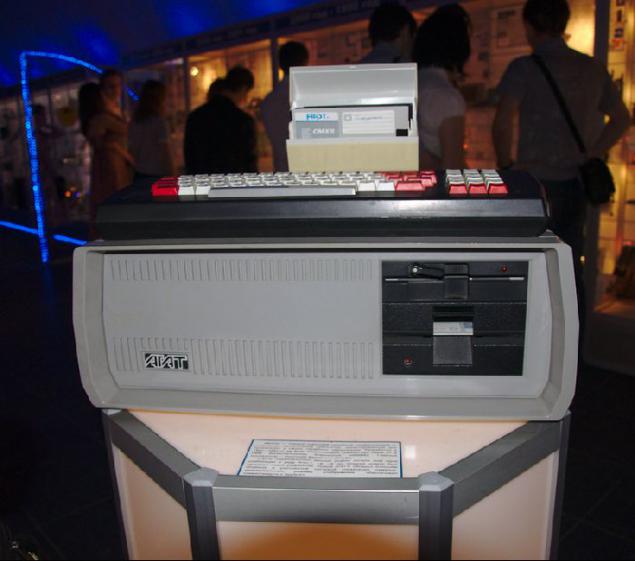
"Agate" is working on an 8-bit processor MOS Technology 6502. When I heard about it, I was surprised at first, thinking that used the original bourgeois processor, but Poryskav on the Internet and found some interesting details (here):
Eight-MOS Technology 6502. This is in theory. In practice, it was like this: in the first Agatha (pilot batch of 100 cars - Agat-5) was placed analogue 6502, collected on separate chips low degree of integration. On a set of commands, he was a little smarter than the 6502, but the speed - slower by about a third.
In the future, the plant management succeeded in supplies from overseas single-chip 6502. These were not the original MOS-ovskie crystals but made for license other companies exact counterparts.
Keyboard and floppy disk to the "Agatha" a treasured inscription "Load».
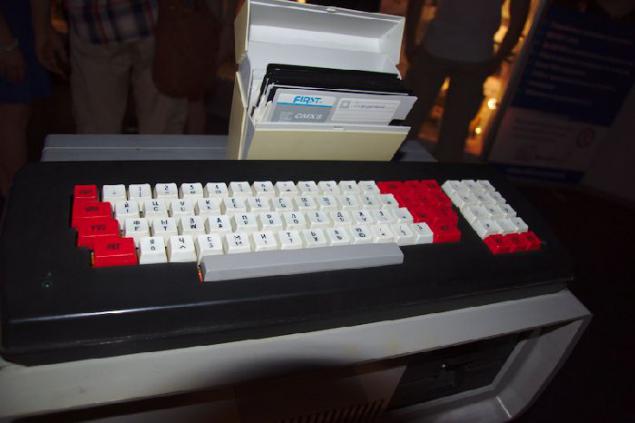
Next to the "Agatha" on the table is more than a modern computer running Windows 95.
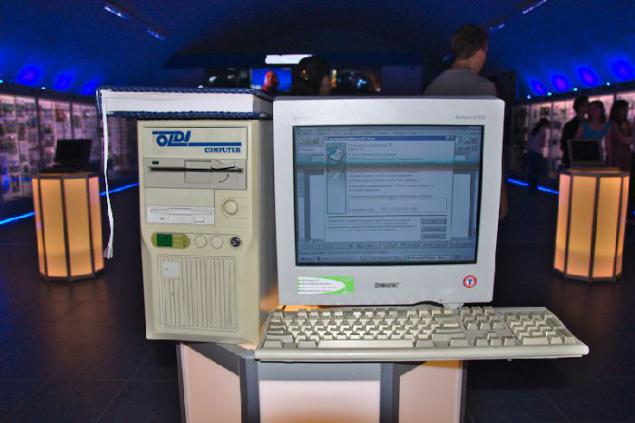
What is the computer is difficult to say, but if properly installed jumper for frequency display on the housing (66 MHz), it can be either 486, or the first Pentium. The computer was launched Word. At first, seeing the volume buttons on the toolbar, pulled down, it is the Word 6, but looking out the window "About", it turned out to be 7 Word for Windows 95. The drive of the computer's floppy disk has been inserted HMD-130, which again reminded me of childhood and times "the search».
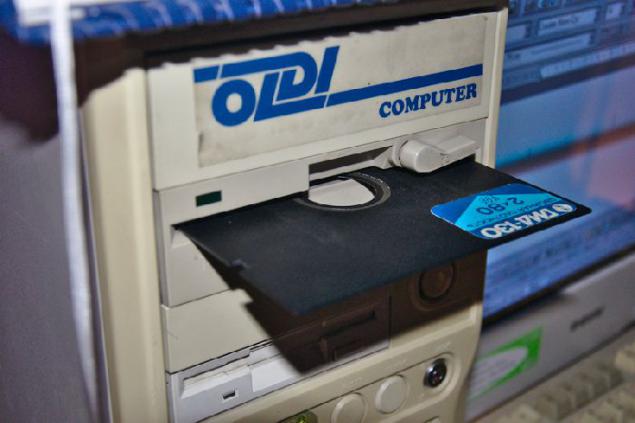
Previously, the label on the floppy disk has remembered what games they were recorded. Only a very tough game then occupied the entire disk. For example, Metal Mutant, which is still quite a long time to load. Now it may be wrong, but it seems to be just the Metal Mutant I got on a floppy disk.
In the gallery, you can play around with some more modern computers, there are, for example Apple iMac G3, is produced in 1998-2003.
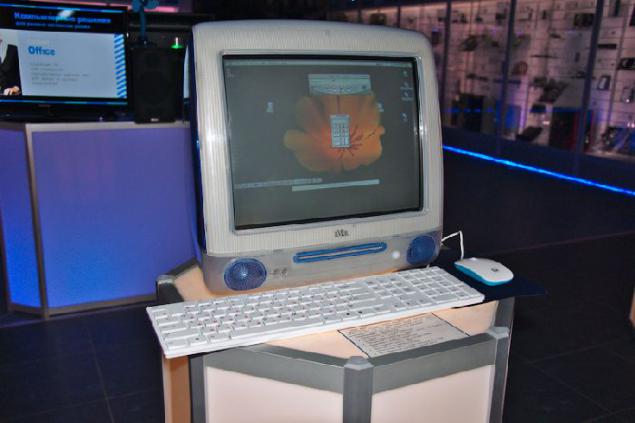
At the end of the exhibition you can see the very modern server-office computers and laptops. But then again, as long as they have practical value rather than historical, we are not going to focus on them. Let them stand up in his place another 30 years, and then we will come back to them with a sighing that the earlier and the grass was thicker, greener and girls.
In principle, the very old computer hardware in the gallery is not much (a very old I understand Soup of the late 80's - early 90's of the last century). There are many pieces of iron of the late 90's - early 2000s. For example, one window exposed to a whole line of processors.
Among them is the processor AMD, an analog of Intel 80486.
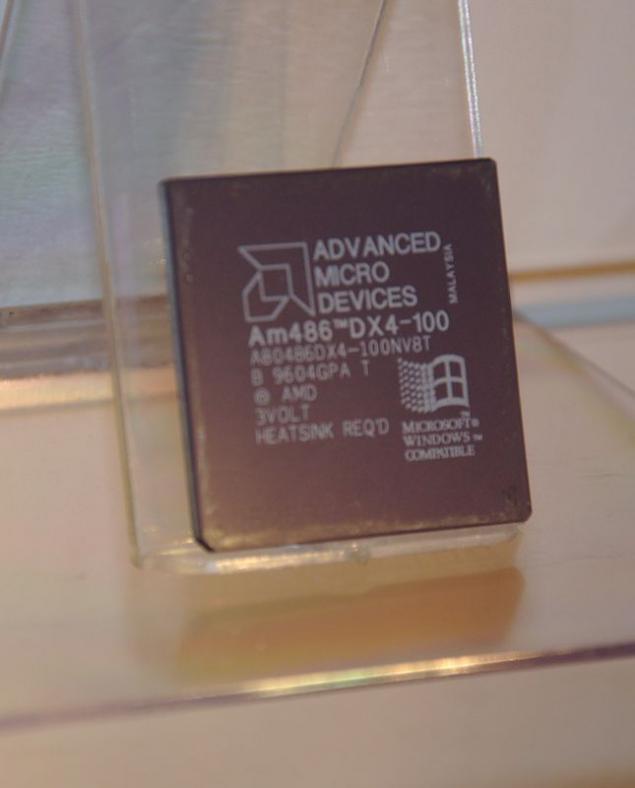
With this processor, I also relate their memories. After the "Search" upgrade your home computer to realize just such a "four", and I must say that from the time I was a supporter of AMD - CPUs they have done no worse than Intel, as prices were much lower. It was only last year when they changed the upgrade by buying a PC with a processor from Intel.
Generally speaking, a work I had a processor with less frequency (can not remember exactly what it was, not 40, not 66 MHz), later appeared from somewhere 100MHz "four", but it turned out that with this processor buggy motherboard (I did not work, and the drive was something else). But then the release of Windows 98 (486 I have lived to a ripe old age, though I already got it second-hand) and it turns out that the Wind does not want to set this is not 40, not 66 MHz processor. The frequency of it, you see, do not like. But it turned out that she quietly set with a 100 MHz processor th. Therefore, before you install Windows I put the processor Am486DX4-100, installed Windows, and then insert the installation main working processor and Windows 98 worked fine ... until some pores. Whether I actively experimented with it and put too much software, whether Windows was so shaky, but I reinstalled it then almost once a month. Then there were already all kinds of shareware-program, and I do not even bother about finding cracks for them if their trial period is equal to a month, so I knew that I Wind unlikely to live longer.
After the "quartet" I was on the computer processor AMD K6-2 500MHz, but unfortunately, I have not found among the exhibits, but there is his immediate predecessor AMD-K6.
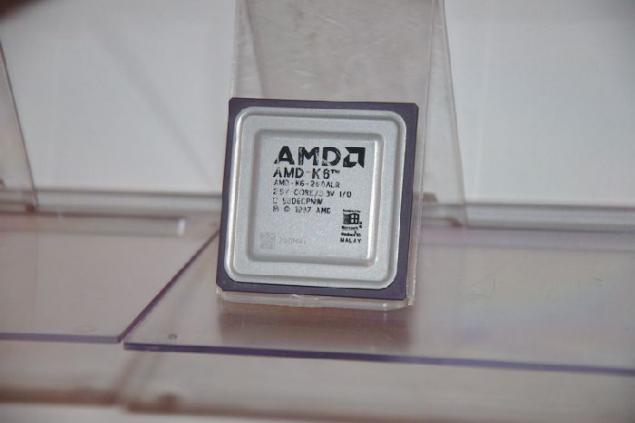
Well, of course, as much as possible, referring to the processors, not to mention Intel. In the gallery you can see the evolution of the computer first Pentium A80501-60 with a frequency of 60 MHz.
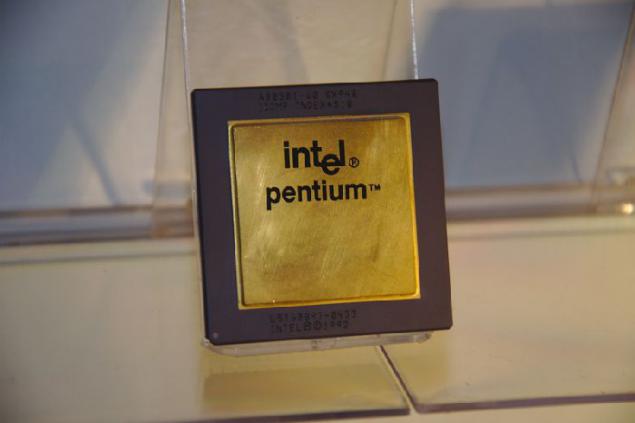
And Pentium MMX-enabled, which is actively advertised, it was considered for a while particularly steep, but few people realize that this kind of MMX, and why you need it.
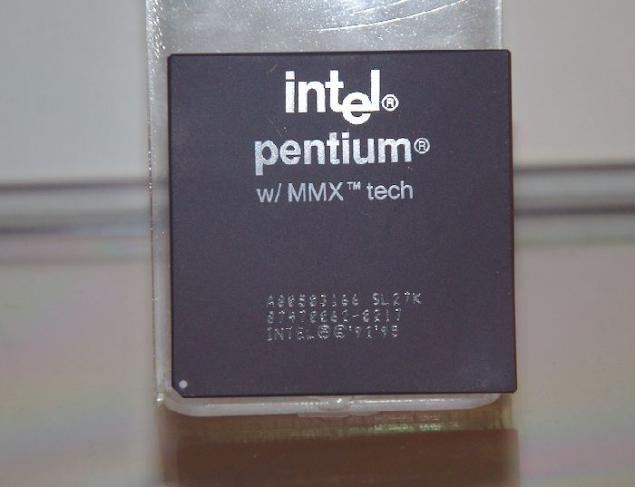
Later came Pentium II, which was sold on the board in the case, which, compared with the usual processors-chips looked like a huge coffin.
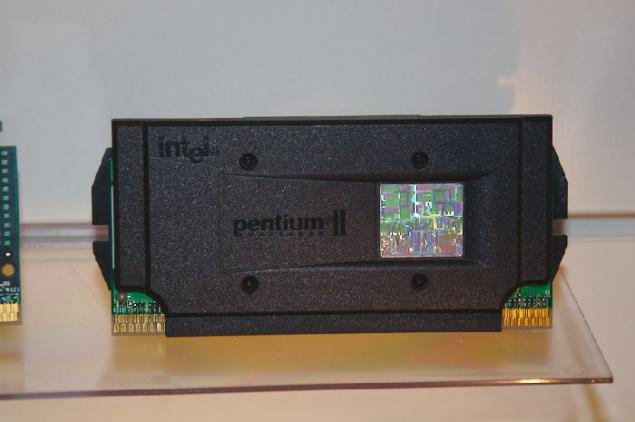
Here I saw hitherto unknown to me Processor - Cyrix MII.

As it turned out, this processor is trying to compete with the Intel Celeron and Pentium II.
In addition to the computers in the gallery you can see the boxes, which were distributed here in the late 1990s - early 2000s. For example, one option Dendy.
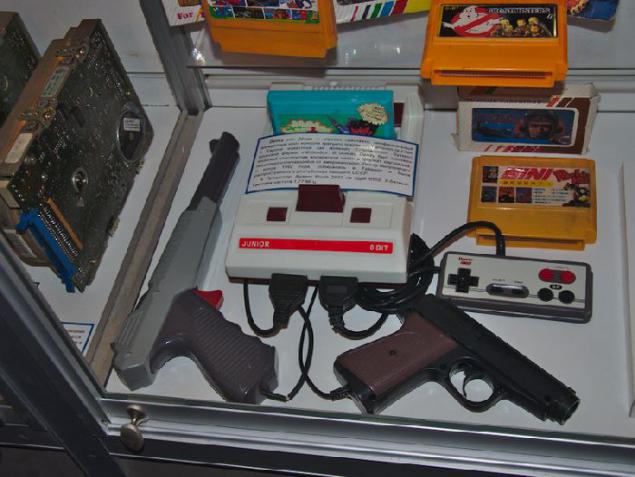
In our country, it was the most famous 8-bit console, but in fact she was a clone NES (Nintendo Entertainment System), about which we have very few people knew the word «Nintendo» associated with a different prefix, but about it later. I remember before the cartridges to Dendy sold on almost every corner. I wonder now somewhere Offline sell cartridges for this prefix?
The gallery Dendy is not just as an exhibit, it is possible and play.
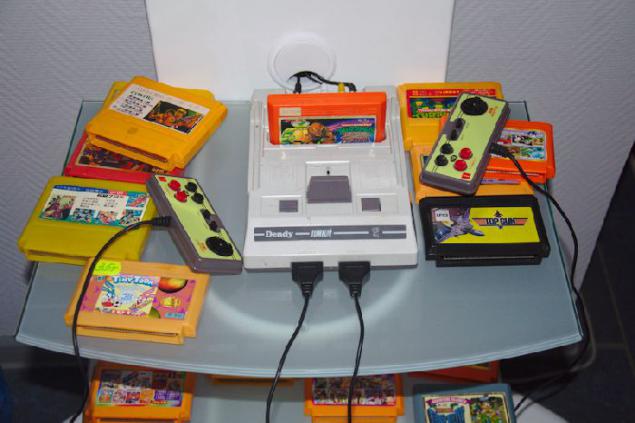
During our visit to the museum, the people played it in tanchiki, then Mario.
But during my childhood steeper prefix has 16-bit Sega Mega Drive. Again, of the teenagers at the time, few people knew the meaning of the 8 and 16 bit, but the graphics on consoles differed dramatically, and this was the main thing. The gallery also has a Sega and we are pleased to have played in Mortal Kombat.

Once we have it was a cult game - blood, guts, dismemberment, cut off the head - what else does your child to be happy? I remember that we recorded in a notebook combination of punches, especially Fatality - bloody action to kill the enemy especially sadistic way - to tear off any part of the body, to impose on the enemy spikes or throw acid in a train. But all sorts of Friendship, Babality and Animality, appearing in the second and later parts of the MK we somehow not a success.
Holding the stick a few minutes from Sega, it turned out that I still remember some strikes, although MK I never played particularly well. Mortal Kombat was the first time I had later on the computer.
Previously, still actively promoted such consoles like Super Nintendo, overseas better known as the Super NES - SNES. As a child I played with her and saw her only in passing Sergei Suponeva "new reality". In the gallery, this console also did not use such a demand as Dendy and Sega.
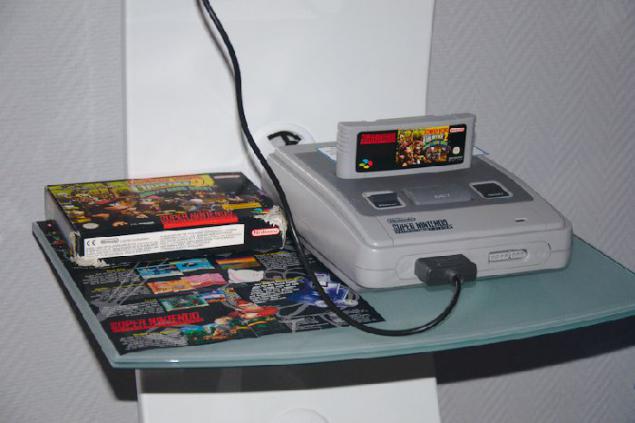
And in the modern part of the gallery are computers where you can play World of Tanks.
Do not forget in the gallery of this game as a contraption Brick Game, better known as "Tetris».

If Tetrises were initially with a small number of games (1-5), then the appearance of such mutants as 9999 in a game (as pictured). However, all of these games have been 999,999 variations of the same 1-5 games, but marketers like to arrange a race for numbers. From memory I can now recall from such games only actually Tetris and Python (not to be confused with the language of Python).
In the previous photo next to the famous Tetris is Figurnova book about computer use and most popular programs under DOS. Somewhere I still is one of the editions of this book. However, I myself this book is completely read, but it had a wonderful table with ASCII-codes, which helped me a great.
Exhibited in the gallery, and other books. For example, a well-known book by Norbert Wiener - the father of cybernetics.
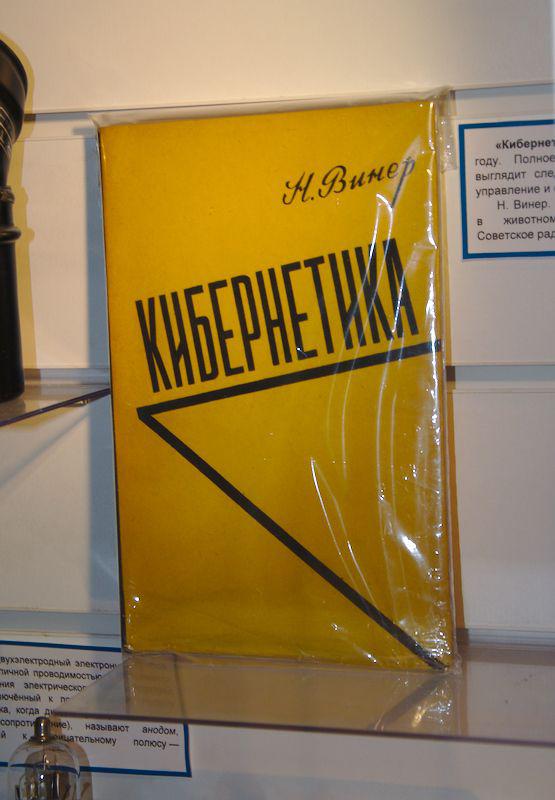
And official records on spreadsheets, Microsoft Works:
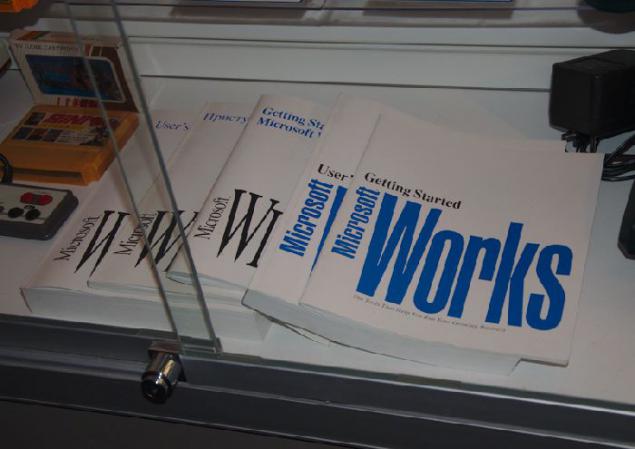
But this book I also somewhere else is.
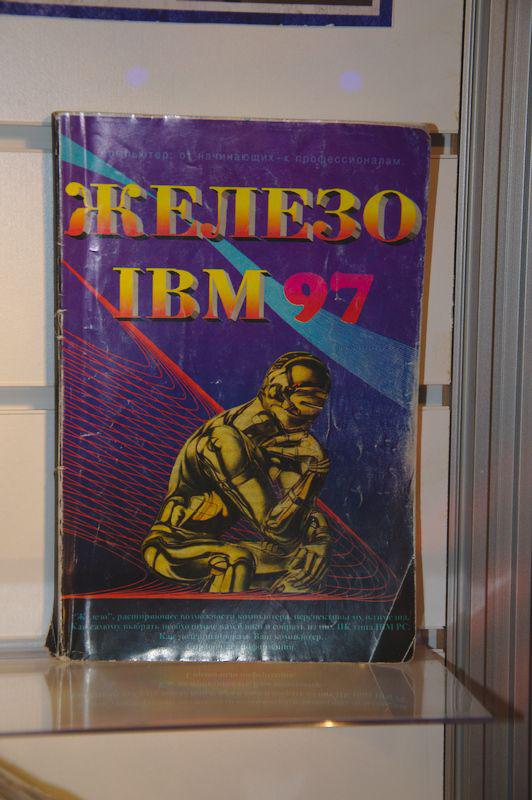
In addition to (about) computer hardware in the gallery you can see the old and cameras. But since it's a bit offtopic, is limited to simple pictures.
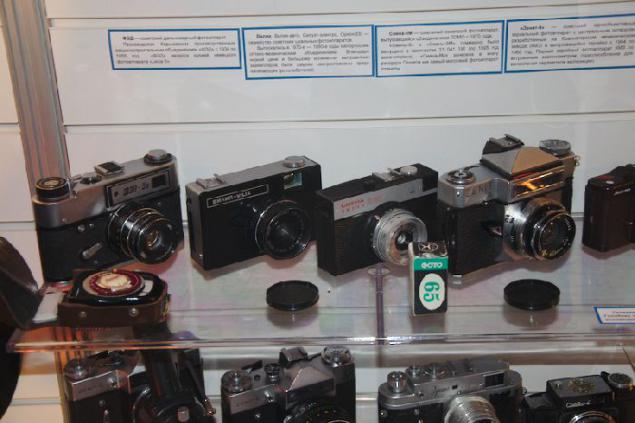

Also among the exhibits on display some of the old mobile phones and pagers.
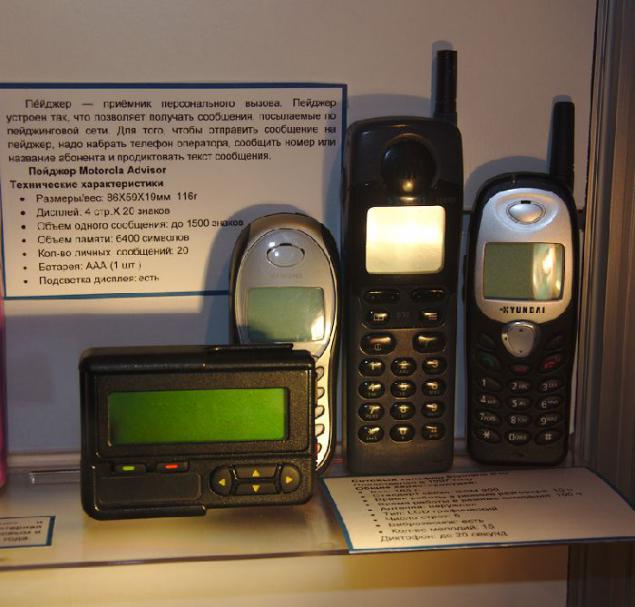
Author

As in other museums dedicated to the development of computer technology, computer evolution in the gallery exhibition begins with counting sticks, and by adding machines. I do not think any of you have not seen counting sticks for first class and scores, so they miss the pictures. But what a museum does without mechanical adding machine "Felix»?

He began to be issued in 1929 and its production lasted right up to 1978. In 1958, a calculating machine cost 110 rubles.
Here you can see and later adding machine VC-1, which started mass-produced since 1951 in the Penza factory "Schetmash." On the Internet for some reason they write that the VC-1 was manufactured in 1953, but in the catalog NIISCHETMASH "Counting machines" the date of serial production is 1951. Cost of such an adding machine in the same in 1958 as much as 750 rubles.

In the description of the exhibit, you can you can read, that this was a copy of an adding machine adding machines, produced by the Swedish company Facit 1939 (Facit TK).
In this museum, I saw my first computer - "Search" (the date of the end of development - 1988)

It was a Soviet computer Soviet KM1810VM88 processor, which was similar to the processor Intel 8088. He had 128 KB of RAM, but it can be increased up to 640 kB, adding an expansion card, similar to what is already inserted into the connector in the picture. The biggest problem of the computer, especially for playing games, video card has CGA, which can simultaneously display no more than four colors. While the games have begun to appear, which required a minimum of graphics EGA, which could show as many as 16 colors. But even these four colors then I could not see because we had a monitor monochrome. Sometimes a computer is connected to a color television, then you can enjoy all the beauty of the CGA-shnyh games. I especially like the graphics in the game Livingstone, do not even think that there are only 4 colors.
"Search" can work with a tape recorder or drive. We he worked with the drive, there was even a second disk drive, but he worked in a day, you can see where something was a bad contact, but where now no one will know. In general, with contacts in the computer it was a real disaster. Sometimes the computer stopped to see the first drive, offering boot from the tape. After compressions at different places of the body and connectors, after repeated reset it, most often, I started to work as if nothing had happened. But the second drive is frequently not working than working.
Housing "Search" was made of plastic creaking terribly, especially at the joints. From the same plastic have joysticks that can be connected to it. In the picture, by the way, an expansion card installed to connect these joysticks. But they are useless, too, was not enough as the games that supported them, could be counted on the fingers of one hand, and even the fingers remain. Theoretically, you could still connect to it and the mouse, but we did not have it, and it was then, and is not particularly needed.
Here in the gallery I saw and printer that we have been working with your computer - MS Electronics in 6312. On top of round boxes, resembling a jar of jam, are interchangeable heads for him.

This inkjet printer, a clone Kodak Diconix-150, although apparently they are still different. I do not know the original printer but MS 6312, as well as the second drive, often lying inoperative. So he burned the power supply, then something else. In general, the purpose of its use is rarely succeeded.
Among the exhibits of the gallery you can see the hard drives, peer "search».

To "search", by the way, too, it was possible to connect the hard drive at the end of the life of the computer he have even appeared, but at the time I told them not particularly used, mostly, was loaded with a bootable floppy disk, and then insert the floppy disk with the desired game or program - and forward.
Floppy disks were the size of 5.27 ", such as in the following photo, which shows the license (!!!) MS-DOS. About the fact that the software is licensed, while few of us know - all the programs and games were bought at Mitino radio market. Round trip for me was an important event, before it was to read the book with a description of games (for example, "50 computer games") and to understand what kind of game I want to buy. Find the right game if not a problem - there was a huge selection.

In addition to "Search" in the gallery you can see another Soviet computer - Agate, which was designed before the "Search" in 1983 at the Research Institute of computer systems (NIIVK).

"Agate" is working on an 8-bit processor MOS Technology 6502. When I heard about it, I was surprised at first, thinking that used the original bourgeois processor, but Poryskav on the Internet and found some interesting details (here):
Eight-MOS Technology 6502. This is in theory. In practice, it was like this: in the first Agatha (pilot batch of 100 cars - Agat-5) was placed analogue 6502, collected on separate chips low degree of integration. On a set of commands, he was a little smarter than the 6502, but the speed - slower by about a third.
In the future, the plant management succeeded in supplies from overseas single-chip 6502. These were not the original MOS-ovskie crystals but made for license other companies exact counterparts.
Keyboard and floppy disk to the "Agatha" a treasured inscription "Load».

Next to the "Agatha" on the table is more than a modern computer running Windows 95.

What is the computer is difficult to say, but if properly installed jumper for frequency display on the housing (66 MHz), it can be either 486, or the first Pentium. The computer was launched Word. At first, seeing the volume buttons on the toolbar, pulled down, it is the Word 6, but looking out the window "About", it turned out to be 7 Word for Windows 95. The drive of the computer's floppy disk has been inserted HMD-130, which again reminded me of childhood and times "the search».

Previously, the label on the floppy disk has remembered what games they were recorded. Only a very tough game then occupied the entire disk. For example, Metal Mutant, which is still quite a long time to load. Now it may be wrong, but it seems to be just the Metal Mutant I got on a floppy disk.
In the gallery, you can play around with some more modern computers, there are, for example Apple iMac G3, is produced in 1998-2003.

At the end of the exhibition you can see the very modern server-office computers and laptops. But then again, as long as they have practical value rather than historical, we are not going to focus on them. Let them stand up in his place another 30 years, and then we will come back to them with a sighing that the earlier and the grass was thicker, greener and girls.
In principle, the very old computer hardware in the gallery is not much (a very old I understand Soup of the late 80's - early 90's of the last century). There are many pieces of iron of the late 90's - early 2000s. For example, one window exposed to a whole line of processors.
Among them is the processor AMD, an analog of Intel 80486.

With this processor, I also relate their memories. After the "Search" upgrade your home computer to realize just such a "four", and I must say that from the time I was a supporter of AMD - CPUs they have done no worse than Intel, as prices were much lower. It was only last year when they changed the upgrade by buying a PC with a processor from Intel.
Generally speaking, a work I had a processor with less frequency (can not remember exactly what it was, not 40, not 66 MHz), later appeared from somewhere 100MHz "four", but it turned out that with this processor buggy motherboard (I did not work, and the drive was something else). But then the release of Windows 98 (486 I have lived to a ripe old age, though I already got it second-hand) and it turns out that the Wind does not want to set this is not 40, not 66 MHz processor. The frequency of it, you see, do not like. But it turned out that she quietly set with a 100 MHz processor th. Therefore, before you install Windows I put the processor Am486DX4-100, installed Windows, and then insert the installation main working processor and Windows 98 worked fine ... until some pores. Whether I actively experimented with it and put too much software, whether Windows was so shaky, but I reinstalled it then almost once a month. Then there were already all kinds of shareware-program, and I do not even bother about finding cracks for them if their trial period is equal to a month, so I knew that I Wind unlikely to live longer.
After the "quartet" I was on the computer processor AMD K6-2 500MHz, but unfortunately, I have not found among the exhibits, but there is his immediate predecessor AMD-K6.

Well, of course, as much as possible, referring to the processors, not to mention Intel. In the gallery you can see the evolution of the computer first Pentium A80501-60 with a frequency of 60 MHz.

And Pentium MMX-enabled, which is actively advertised, it was considered for a while particularly steep, but few people realize that this kind of MMX, and why you need it.

Later came Pentium II, which was sold on the board in the case, which, compared with the usual processors-chips looked like a huge coffin.

Here I saw hitherto unknown to me Processor - Cyrix MII.

As it turned out, this processor is trying to compete with the Intel Celeron and Pentium II.
In addition to the computers in the gallery you can see the boxes, which were distributed here in the late 1990s - early 2000s. For example, one option Dendy.

In our country, it was the most famous 8-bit console, but in fact she was a clone NES (Nintendo Entertainment System), about which we have very few people knew the word «Nintendo» associated with a different prefix, but about it later. I remember before the cartridges to Dendy sold on almost every corner. I wonder now somewhere Offline sell cartridges for this prefix?
The gallery Dendy is not just as an exhibit, it is possible and play.

During our visit to the museum, the people played it in tanchiki, then Mario.
But during my childhood steeper prefix has 16-bit Sega Mega Drive. Again, of the teenagers at the time, few people knew the meaning of the 8 and 16 bit, but the graphics on consoles differed dramatically, and this was the main thing. The gallery also has a Sega and we are pleased to have played in Mortal Kombat.

Once we have it was a cult game - blood, guts, dismemberment, cut off the head - what else does your child to be happy? I remember that we recorded in a notebook combination of punches, especially Fatality - bloody action to kill the enemy especially sadistic way - to tear off any part of the body, to impose on the enemy spikes or throw acid in a train. But all sorts of Friendship, Babality and Animality, appearing in the second and later parts of the MK we somehow not a success.
Holding the stick a few minutes from Sega, it turned out that I still remember some strikes, although MK I never played particularly well. Mortal Kombat was the first time I had later on the computer.
Previously, still actively promoted such consoles like Super Nintendo, overseas better known as the Super NES - SNES. As a child I played with her and saw her only in passing Sergei Suponeva "new reality". In the gallery, this console also did not use such a demand as Dendy and Sega.

And in the modern part of the gallery are computers where you can play World of Tanks.
Do not forget in the gallery of this game as a contraption Brick Game, better known as "Tetris».

If Tetrises were initially with a small number of games (1-5), then the appearance of such mutants as 9999 in a game (as pictured). However, all of these games have been 999,999 variations of the same 1-5 games, but marketers like to arrange a race for numbers. From memory I can now recall from such games only actually Tetris and Python (not to be confused with the language of Python).
In the previous photo next to the famous Tetris is Figurnova book about computer use and most popular programs under DOS. Somewhere I still is one of the editions of this book. However, I myself this book is completely read, but it had a wonderful table with ASCII-codes, which helped me a great.
Exhibited in the gallery, and other books. For example, a well-known book by Norbert Wiener - the father of cybernetics.

And official records on spreadsheets, Microsoft Works:

But this book I also somewhere else is.

In addition to (about) computer hardware in the gallery you can see the old and cameras. But since it's a bit offtopic, is limited to simple pictures.


Also among the exhibits on display some of the old mobile phones and pagers.

Author

